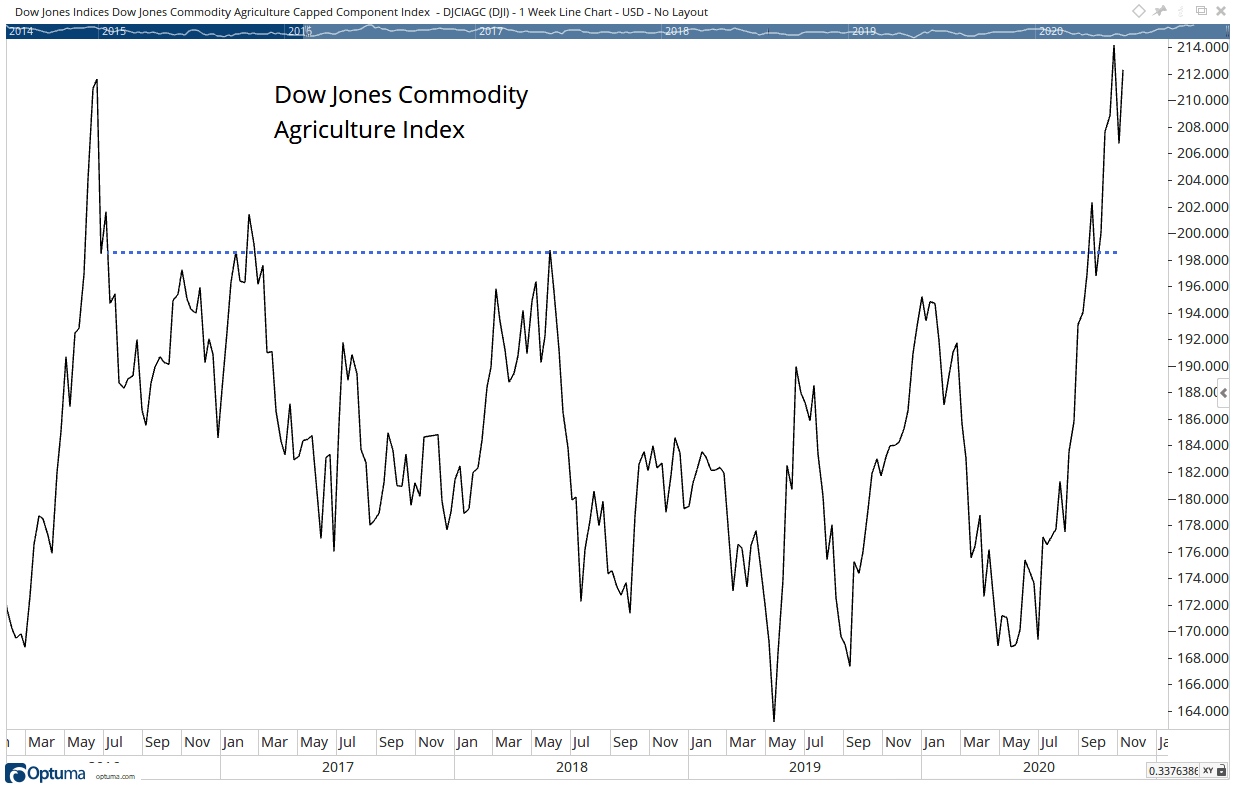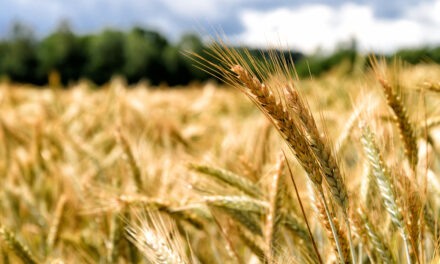Inflation is dead.
At least, that’s what experts are telling us. And they make a strong argument.
To revive the economy, the Federal Reserve pushed interest rates close to zero in 2008. And 12 years later, rates remain near zero.
According to the standard economic theory, inflation should rise if rates are too low. Official data show that inflation has remained low since 2008.
Now, Fed officials assure us that they can keep rates near zero without sparking inflation.
One of the official inflation measures is the consumer price index (CPI). The most recent report shows that the CPI rose only 1.4% in the past 12 months.
However, like most economic data, the CPI looks backward.
Market data show that in the next few months, inflation could rise sharply. A chart of an index tracking grain prices forewarns of what’s to come.
Grain Prices Are Rising
Food prices in the CPI rose 3.9% in the past 12 months. The chart below shows that they could rise even more in the next few months.
The Dow Jones Commodity Agricultural Index Is up 22% in 6 Months

(Source: Optuma.)
The Dow Jones Commodity Agriculture Index tracks prices of corn, soybeans, rice and other agricultural products’ trades as futures.
These are real-time market prices, and the trend is up. The index is at a four-year high.
This index is important because it monitors the first inputs in the food supply chain: prices of raw grains.
As the global economy began reopening in the summer, grain prices soared. The index is up 22% in the past six months.
Food prices account for 14.7% of the CPI. Price pressures in grain markets may soon have a significant impact on the CPI.
The Spark That Sets off Inflation
Low interest rates add to inflationary pressures.
Farmers receiving higher prices for grains may invest in new equipment and supplies. Some may borrow at low rates to upgrade older equipment.
Manufacturers will ramp up production in response to new orders. This leads to new jobs and higher wages.
The effects of new orders are positive in isolation. But new orders and hiring can spark pent-up demand throughout all levels of the economy.
With prices of raw materials rising, a spark like that could set off an uncontrollable wave of inflation.
Grain prices are an early warning sign. Unless they crash soon, we should expect higher prices in 2021.
Regards,

Editor, One Trade










